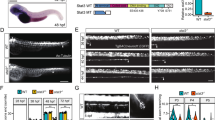Abstract
During the development of higher vertebrates, motoneurons are generated in excess. In the lumbar spinal cord of the developing rat, about 6000 motoneurons are present at embryonic day 14. These neurons grow out axons which make contact with their target tissue, the skeletal muscle, and about 50% of the motoneurons are lost during a critical period from embryonic day 14 until postnatal day 3. This process, which is called physiological motoneuron cell death, has been the focus of research aiming to identify neurotrophic factors which regulate motoneuron survival during this developmental period. Motoneuron cell death can also be observed in vitro when the motoneurons are isolated from the embryonic avian or rodent spinal cord. These isolated motoneurons and other types of primary neurons have been a useful tool for studying basic mechanisms underlying neuronal degeneration during development and under pathophysiological conditions in neurodegenerative disorders. Accumulating evidence from such studies suggests that some specific requirements of motoneurons for survival and proper function may change during development. The focus of this review is a synopsis of recent data on such specific mechanisms.
Similar content being viewed by others
Author information
Authors and Affiliations
Additional information
Electronic Publication
Rights and permissions
About this article
Cite this article
Sendtner, M., Pei, G., Beck, M. et al. Developmental motoneuron cell death and neurotrophic factors. Cell Tissue Res 301, 71–84 (2000). https://doi.org/10.1007/s004410000217
Received:
Accepted:
Published:
Issue Date:
DOI: https://doi.org/10.1007/s004410000217




